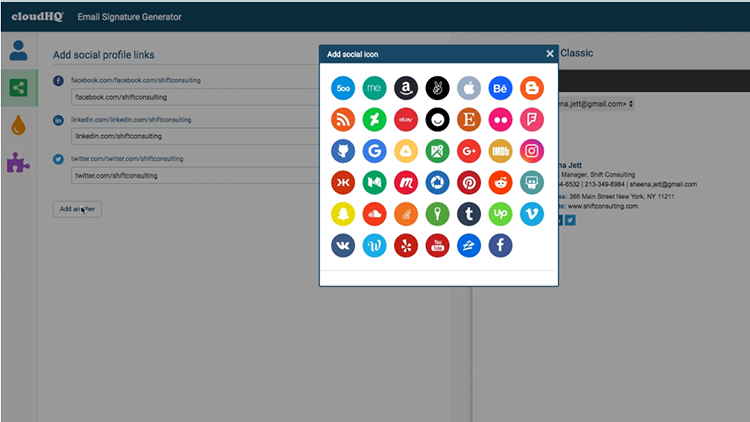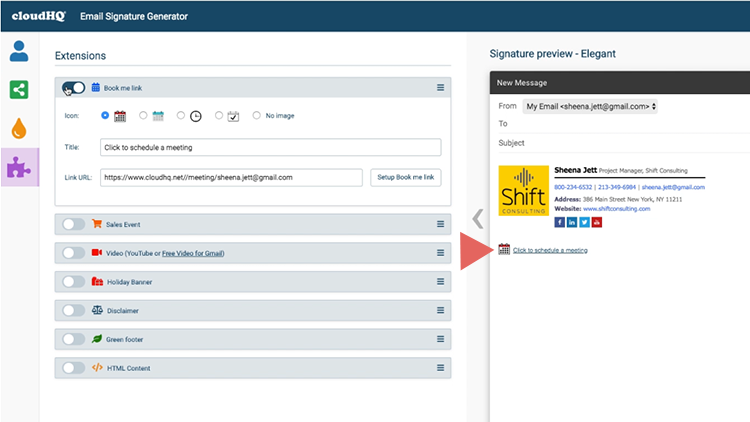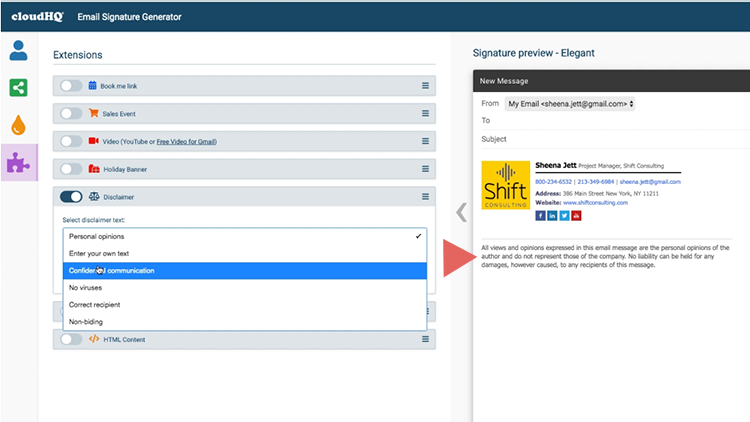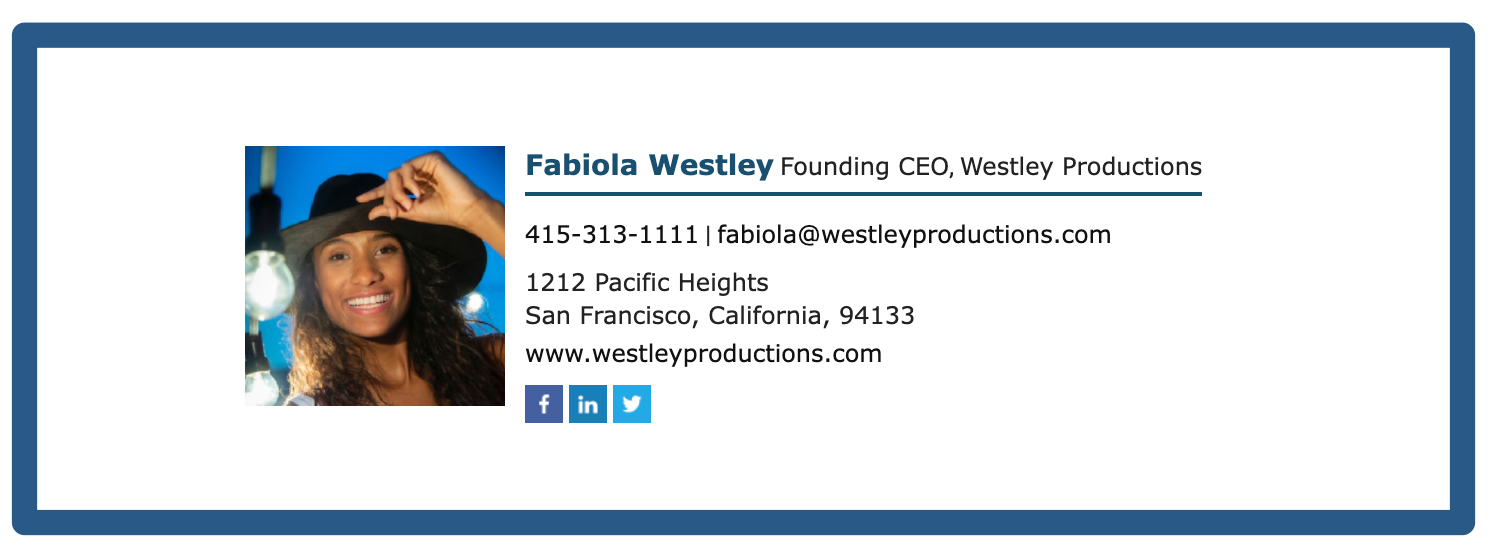A well-crafted email signature can make a great impression on your recipients and help to strengthen your professional image. In this guide, we will provide tips on what to include in your email signature, as well as some professional examples to help you get started. Let’s get started!
Every email you send is a potential marketing opportunity for yourself and your business. Every day, the typical office employee sends out 40 emails. Those signatures are an opportunity for you to establish yourself, make it simple for individuals to get in touch with you, and provide them a location to learn more—whether about yourself, your company, or anything else you’re working on. Many individuals neglect their email signatures, which is a significant oversight.
If you’re just putting your name and a few sentences of contact information in your signature, you’re not taking full advantage of the chance to engage and connect with the people you’re emailing. However, going overboard is definitely not advised. Signatures that are crammed full of links and information are generally considered spammy.
What should go in your signature? This will be determined by personal taste, your company’s corporate and cultural identity, and even the sector you work in. Here are some ideas for you to use as you create your own:
1. Name and Email
Your name should be included in the same manner as snail mail so that the person receiving your message can identify who it came from. This is often the first line of text in your email signature.
Your email address can be included alongside your name or below it on the next line. If you have several different email addresses within your organization—work-related and personal—you’ll want to make sure that there is no confusion as to which one you are using at any given time.
2. Job Title and Department
It’s also a good idea to include what your job title is, what company you work for, and what department. You might wonder why you should tell people anything more than your name after your initial introduction, but providing additional context about the interaction and your role in it will enhance its importance. In addition, affiliating yourself with a bigger entity lends credibility to your message.
There are many ways to show this information. For example, your Job Title and Department could appear in parenthesis directly after your name: John Smith (CEO). You may choose to put this information in bold font if desired; however, some individuals prefer not to do this because they feel it looks too cluttered.
3. Secondary Contact Information
Secondary contact information is also crucial, as it allows the recipient to reach out to you in other ways. Secondary data might be anything from a phone call to a fax number or any other method of communication that you want to emphasize. You can also use this opportunity to promote your own website – a passive approach to open communication without overwhelming yourself with outreach if you don’t want to give up your direct line.
4. Email Signature with Social Media Icons
The internet has made it easy to connect with people on a personal level. Social media outlets such as Facebook, Twitter, and LinkedIn have changed the way that we communicate and share information about what’s going on in our lives. It is also an excellent opportunity for you to showcase what you’re interested in outside of work by displaying social media icons below your contact details (if appropriate). This can help give recipients more insight into who they’re interacting with at any given time – which means better customer service experiences!
Even if you have a large social media presence, limit the number of icons to five or six. Concentrate on the accounts that are critical for growing your business or developing your personal brand.
What are the benefits of using social media icons rather than plain text links? Icons are more easily recognizable to people scanning your signature – and they’ll stick out from the rest of the text in there. Visuals presented in color increase a person’s willingness to read the remainder of the material by 82%. That’s a significant benefit. In addition, icons save space because they take up so much less room than words.
Not sure how to include social media icons? It’s super easy with Free Email Signature Generator by cloudHQ:

5. Call to Action
A call-to-action is one of the most valuable things you can do in your email signature. The most excellent email signature CTAs are simple, up-to-date, non-pushy, and consistent with your email style, making them seem more like postscript than a sales pitch. Choose a call to action that supports one of your current company objectives, and change it if your goals change.
For example, if you want to drive people to your brand’s Twitter account, you can add a CTA after your email signature.

6. Meeting Scheduler for Calendar Booking Links
If you’re receiving many emails from coworkers and clients who want to schedule appointments with you, make it simple for them by including a link in your email signature that takes them to the calendar where they can book your time.
There are many tools out there that’ll help people book appointments. If you’re using Google Calendar, for example, you can use the “Add a Meeting” feature to create a booking link.
Not sure how to include this? It’s super easy with Free Email Signature Generator by cloudHQ:

7. Industry Disclaimer or Legal Requirements
To protect private information from being transmitted, certain sectors, such as legal, financial, and insurance, have unique guidelines on email usage and etiquette. In order to ensure that you’re in compliance with the regulations of your field, it’s essential to include a disclaimer or legal requirement in your email signature.
You can find more information about specific disclaimers and requirements by contacting an expert in your industry, such as an attorney. Free Email Signature Generator by cloudHQ has a canned selection for you to use here to make sure your emails are confidential. You can make the disclaimer smaller as well.

8. Email Signature with Logo or Picture
Including a photo or logo in your email signature is an excellent way to personalize your communications and add visual interest. It can also help recipients remember who you are, what you do, and where they can find more information about you online.
When selecting a photo or logo for your email signature, it’s important to keep a few things in mind:
- Your image should be professional and of high quality.
- If including a logo, make sure it’s legible in small sizes.
- Don’t use too much text or graphics; they’ll take up valuable space and might not display correctly on all devices.
- Finally, be aware of copyright laws before using any copyrighted material without permission.
9. Pronouns
While not as common in email signatures as other elements, pronouns can be a powerful tool for addressing your gender identity.
Including these three little letters in your email signature lets people know what you prefer to be called, helping them address you correctly and avoid using the wrong pronoun (which may cause offense).
Now that you know what to include in your email signature, it’s time to start designing one that’ll help you achieve your goals! Free Email Signature Generator by cloudHQ makes it easy to create stylish email signatures that include all of this vital information—and more! Try it free today.
Beyond knowing what to include in your email signature, it’s also helpful to keep a number of design tips in mind:
10. Keep Colors Simple and Consistent
Branding is most effective when it’s consistent, so use the same colors, fonts, and design style in your email signature as you do on other branding materials. If you do decide to incorporate color, stick to one or two colors in addition to black text.
11. Use Design Hierarchy
When you have a lot of information to include in your email signature, use a design hierarchy to help readers focus on the most critical elements. Place the most important information at the top or use larger fonts for headings.
12. Keep it Short and Sweet
The average email signature is around four lines long, so be sure to keep yours brief! Include only the essential information and leave out anything that isn’t relevant or necessary.
13. Email Signature with Clickable Links
If you’re including links in your email signature, make sure they’re trackable so you can see what people click on most. This will help guide future decisions about what to include in your email signature—and what to leave out.
14. Use Space Dividers
Dividing your email signature into sections with space dividers helps keep the design clean, organized, and easy to read. To create a visual break between elements in your email signature, add an extra line or two of blank space between them. For example:

15. Include an International Prefix in Your Contact Number
If you work with people around the world, it’s a good idea to include an international prefix in your contact number. This will ensure that people can dial it correctly no matter what country they’re in.
16. Make Your Design Mobile-Friendly
People use their smartphones for everything these days—even checking work emails! Make sure that what you’re sending is mobile-friendly by testing how it looks on different screen sizes before sending any important messages from your phone or tablet device. Make sure it looks good on all devices.
Now that you know all about email signatures, it’s time to design one that’ll help you reach your goals! Create a new, on-brand email signature in just a few clicks with Free Email Signature Generator by cloudHQ. Get started here. (It’s free.)
To see a PDF version of this blog post, please click this link: The Ultimate Guide on How to Write a Great Email Signature – cloudHQ Blog